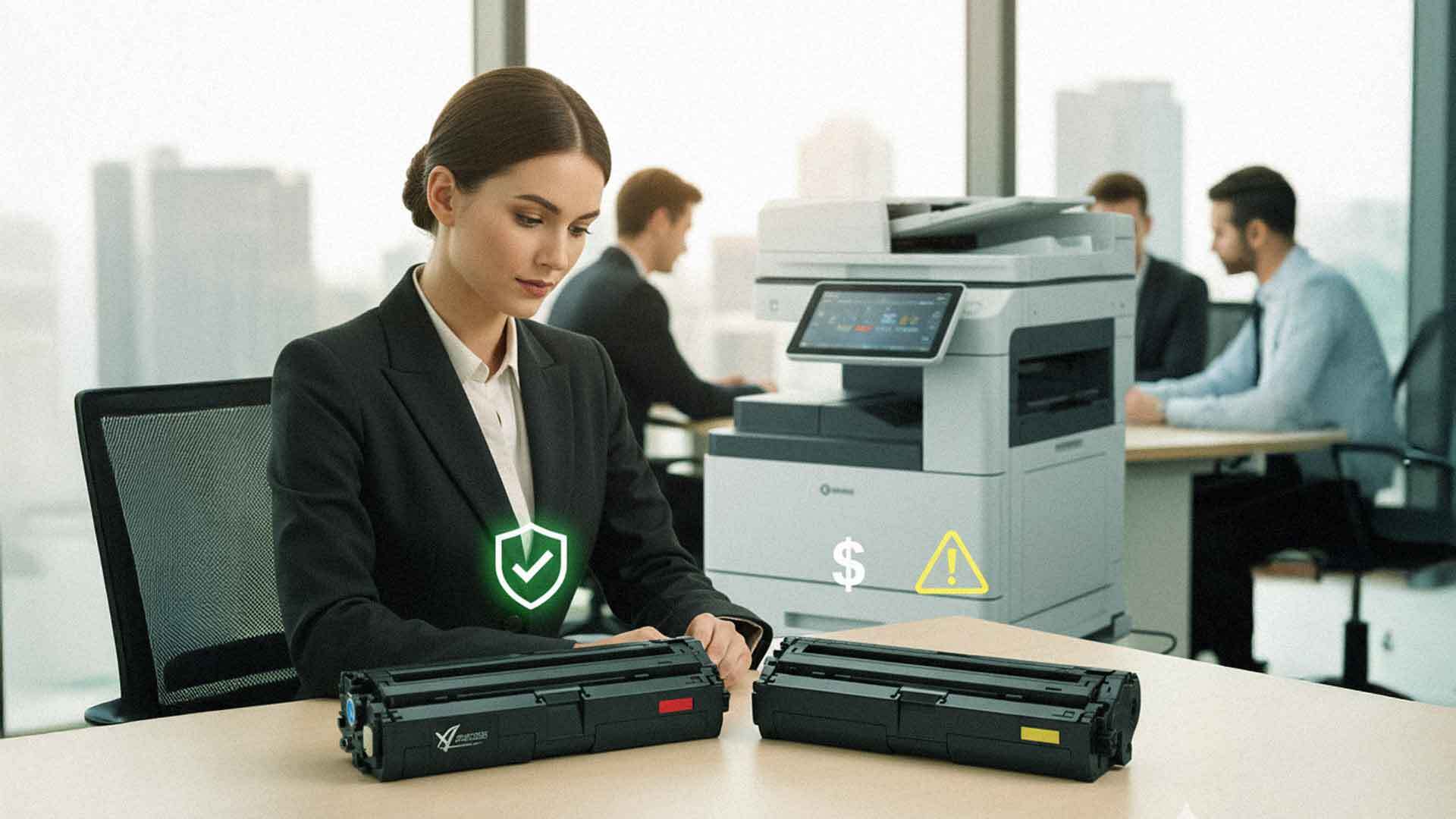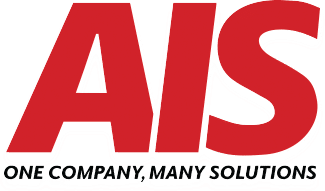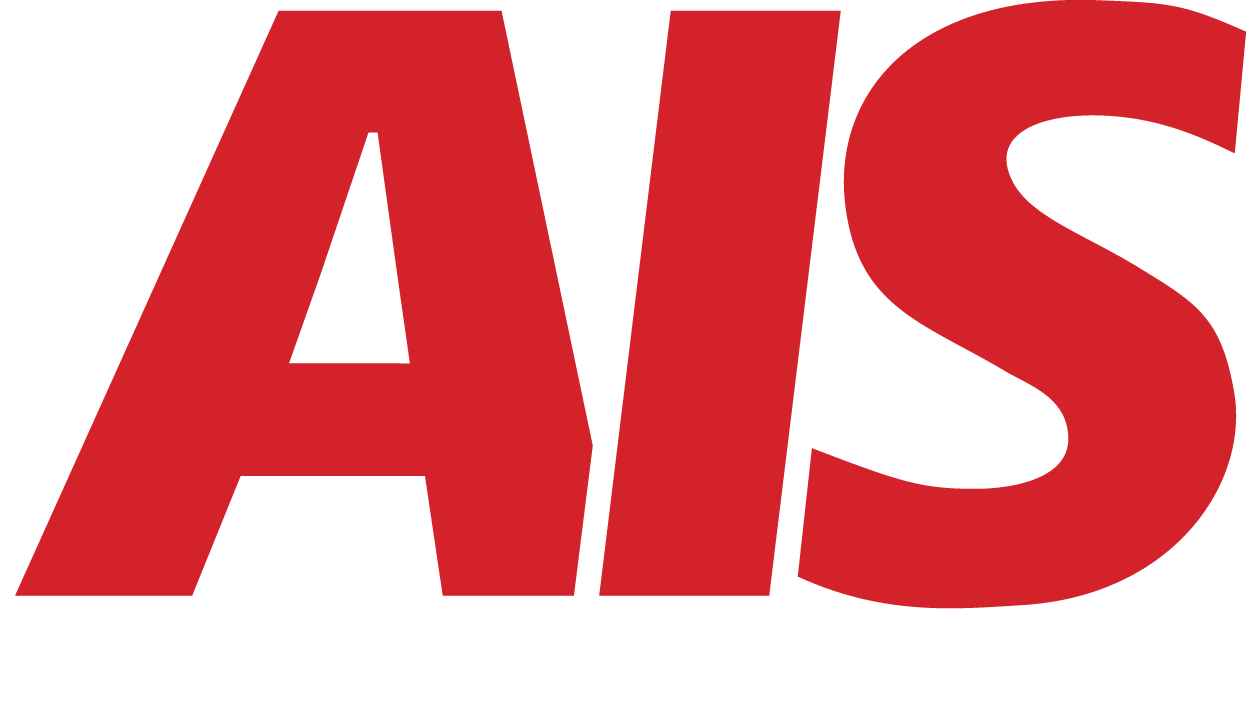What Are “Aftermarket” Toner Cartridges—and Should You Use Them?
September 26th, 2025 | 6 min. read

If you’ve ever shopped for replacement toner cartridges online, you’ve probably seen the price gap.
On one side, you have the original manufacturer’s toner (OEM), priced higher but backed by the brand. On the other hand, there’s a cheaper alternative, an aftermarket toner that claims to do the same job for a lot less.
So, what’s the catch?
In this article, we’ll explain what aftermarket toner really is, how it compares to OEM toner, and whether or not it’s worth using in your office copier or printer.
What Does “Aftermarket” Actually Mean?
Aftermarket toner refers to cartridges made by third-party manufacturers—not the original brand that built your copier or printer.
Let’s break it down further:
- OEM (Original Equipment Manufacturer): Toner made by the same company that made your printer or copier (e.g., Kyocera toner for a Kyocera machine).
- Compatible Toner: New cartridges made by a third party, designed to work in OEM devices.
- Remanufactured Toner: Recycled OEM cartridges that are cleaned, refilled, and sometimes rebuilt.
- Refilled Toner: Cartridges that are simply topped off with new toner—often with no quality control.
While “aftermarket” is often used as a blanket term, there’s a wide range of quality among these alternatives.
Why Some Businesses Choose Aftermarket Toner
Let’s be honest. The appeal is obvious.
- It’s cheaper. Aftermarket cartridges can cost 30 to 70 percent less than OEM.
- They’re easy to find. A quick search online pulls up dozens of suppliers.
- They may seem “good enough.” For internal use or draft-quality prints, some companies don’t feel the need to pay more.
And in some cases, aftermarket toner does the job just fine. But before switching, it’s important to understand the trade-offs.
The Risks and Trade-Offs of Using Aftermarket Toner for Office Copiers & Printers
1. Print Quality and Consistency
This is usually the first place users notice a difference.
Aftermarket toner can produce:
- Uneven or streaky prints
- Poor color matching
- Toner flaking or rubbing off the page
While some brands are decent, many are inconsistent from one batch to the next. That creates headaches for teams that rely on polished, professional-looking prints.
2. Device Compatibility
Modern copiers and printers often have firmware updates that detect and reject non-OEM toner.
Even if the cartridge fits, it might:
- Trigger error messages
- Be blocked by the device
- Cause performance issues
Compatibility can vary based on the machine model and the cartridge generation.
3. Copier or Printer Damage
Toner cartridges seem simple, but they interact with sensitive components like drums and fuser assemblies.
Poorly designed cartridges can:
- Leak toner inside the machine
- Misalign or jam during printing
- Wear down internal parts faster
This can lead to more service calls, increased downtime, and even permanent damage in worst-case scenarios.
4. Warranty Concerns
Most manufacturers state clearly that using non-OEM toner may void your copier warranty, especially if a cartridge causes a malfunction.
Some vendors or dealers will also refuse to provide service if aftermarket toner has been used. That means you’re on the hook for repairs or replacement.
5. Support Limitations
Even if the vendor still services your equipment, they may:
- Charge more for repairs involving aftermarket cartridges
- Require you to switch back to OEM before diagnosing issues
- Limit troubleshooting over the phone if they suspect toner problems
The savings on toner can quickly evaporate when support becomes more complicated.
Are There Any High-Quality Alternatives?
Yes, some. But you’ll need to do your homework.
Look for:
- ISO-certified manufacturing standards
- Performance testing guarantees
- Vendors who back the cartridges with a service agreement
Some companies offer “premium compatible” toner that’s been tested to meet OEM performance. If you’re going the aftermarket route, this is the safest choice.
Avoid:
- Generic listings on auction or overseas sites
- Refills without quality control
- Bargain-bin brands with no warranty or return policy
What’s the Real Cost Difference Over Time?
Let’s look at a simple example. Assume your office prints 5,000 pages per month.
|
Option |
Toner Cost per Cartridge |
Page Yield |
Annual Toner Cost |
|
OEM |
$250 |
10,000 pages |
~$1,500 |
|
Aftermarket |
$150 |
10,000 pages |
~$900 |
At first glance, the aftermarket saves you $600 per year.
But factor in:
- Two extra service calls at $200 each
- A print job re-do that wastes 1,000 pages
- A drum replacement due to leaking toner
That $600 savings can vanish fast. And it doesn’t account for lost time, productivity, or client impressions.
What We Tell Our Clients at AIS
At AIS, we’ve tested dozens of aftermarket toner options over the years.
Some performed well. Others... not so much.
Here’s our current policy:
- We support approved aftermarket brands that meet our performance standards.
- We don’t void service agreements automatically, but we do require full disclosure.
- If a toner-related issue occurs, we’ll flag it and recommend corrective action.
- For most clients, we recommend OEM toner because it reduces variables and ensures uptime.
Our goal is not to scare anyone away from aftermarket options. Our goal is to make sure your device runs reliably and your business keeps moving.
Final Thoughts: Don’t Just Look at the Price Tag—Look at the Bigger Picture
It’s tempting to save money by switching to an aftermarket toner. And for some businesses, it works just fine.
But before making that change, ask:
- Can we risk downtime or print quality issues?
- Is our service agreement still valid?
- Are we prepared to replace the cartridge if it causes problems?
The cheapest toner isn’t always the most cost-effective in the long run.
Work with a vendor who will give you clear, honest answers about what’s supported, and what isn’t. At AIS, we’re happy to help you weigh your options and choose the path that keeps your business running at its best.
A true southerner from Atlanta, Georgia, Marissa has always had a strong passion for writing and storytelling. She moved out west in 2018 where she became an expert on all things business technology-related as the Content Producer at AIS. Coupled with her knowledge of SEO best practices, she's been integral in catapulting AIS to the digital forefront of the industry. In her free time, she enjoys sipping wine and hanging out with her rescue-dog, WIllow. Basically, she loves wine and dogs, but not whiny dogs.
Topics:



